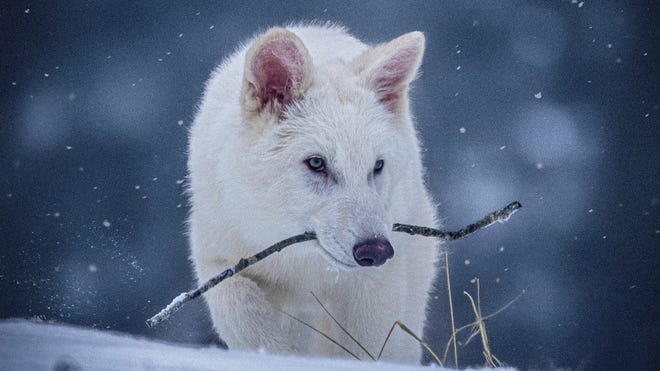The Return of the Dire Wolf: Exploring the Latest Breakthroughs in De-Extinction
The idea of bringing extinct species back to life has been a topic of fascination for scientists and nature enthusiasts alike. Recently, the concept of the dire wolf brought back into our ecosystems has gained traction, especially with the advent of groundbreaking biotechnologies and de-extinction efforts. With the recent news surrounding the return of the dire wolf, it is essential to explore how this could lead to significant changes in our understanding of biodiversity, conservation, and the ethical implications of such scientific advancements.
Understanding the Dire Wolf: A Brief History
Dire wolves (Canis dirus) roamed the Earth during the Late Pleistocene era, approximately 250,000 years ago. Unlike the common wolf we see today, these majestic creatures were larger and were known for their powerful jaws and robust build. They primarily hunted large herbivores, such as bison and horses, making them apex predators of their time. However, with the advent of climate change and human expansion, dire wolves eventually faced extinction about 10,000 years ago.
What is De-Extinction?
De-extinction refers to the scientific process of reviving extinct species. This is often achieved through advanced biotechnological techniques such as cloning, selective breeding, and genetic engineering. Various approaches have garnered attention, including:
- Cloning: Utilizing preserved DNA from extinct species to create a clone.
- Genetic Engineering: Modifying the genetic makeup of a living species to exhibit traits of an extinct one.
- Selective Breeding: Breeding existing species that have close genetic ties with extinct ones.
The field of de-extinction is rapidly evolving, with advancements in DNA extraction and gene editing technologies, particularly CRISPR, providing promising avenues for resurrecting ancient species.
The Role of Technology in Reviving Dire Wolves
The recent announcement about the return of the dire wolf highlights not only the scientific progress made in de-extinction efforts but also the possibilities that lie ahead. Companies and research teams are collaborating to extract DNA from dire wolf remains found in fossil sites, utilizing sophisticated genome sequencing techniques.
By isolating and reconstructing the genome of the dire wolf, scientists aim to utilize a closely related species, the gray wolf, to bring these creatures back to life. The hybridization process could allow researchers to introduce the dire wolf traits into the gray wolf genome. This process raises various questions around the ethics of creating a hybrid species versus a true dire wolf.
Ethical Considerations and Environmental Impacts
The debate around de-extinction isn’t just scientific; it’s profoundly ethical. The revival of the dire wolf poses numerous questions about ecological balance and biodiversity. Would reintroducing dire wolves into their former habitats disrupt existing ecosystems? Could they become an invasive species? These considerations must be thoughtfully addressed to ensure that restoration efforts do not harm current wildlife.
Furthermore, as artificial selection and genetic architecture are evaluated, ethical concerns about genetic manipulation and the potential suffering of these animals upon their return are paramount. It is crucial that scientists, conservationists, and ethicists work together to navigate the complexities associated with de-extinction.
Potential Benefits of Bringing Back the Dire Wolf
Despite the challenges, there are several potential benefits to reviving the dire wolf. One major advantage is the potential for restoring ecological roles lost with their extinction. Apex predators like the dire wolf can help maintain balanced ecosystems by regulating prey populations.
Moreover, their return could enhance genetic diversity within the canine family and provide unique opportunities for studying evolutionary biology and adaptation. The ecological research that could arise from smartly integrated dire wolf populations might lead to novel insights into conservation strategies for endangered species.
The Future of De-Extinction: What Lies Ahead?
With the excitement surrounding the dire wolf brought back initiative, many are left wondering what the future holds for de-extinction. As technology continues to advance, we may witness the revival of not just the dire wolf but other extinct species as well. However, this complex journey must be guided by scientific rigor and ethical responsibility.
More research and discussions are essential to ensure that the lessons learned from past extinctions guide our efforts in the future. Collaborative efforts between technologists, ecologists, and policymakers will play a vital role in shaping the agenda for de-extinction.
Conclusion
The return of the dire wolf is an incredible prospect that ignites our imagination and urges us to reflect on our role in conservation and biodiversity. By exploring de-extinction, we can bridge the gap between historical knowledge and future possibilities, shaping a more sustainable and balanced world. As we navigate these uncharted territories, it is essential to advocate for responsible practices that consider not just the scientific achievements, but also the broader implications for our planet.
As we look forward to the potential of the dire wolf’s return, let us also remain vigilant and responsible caretakers of our existing wildlife.






